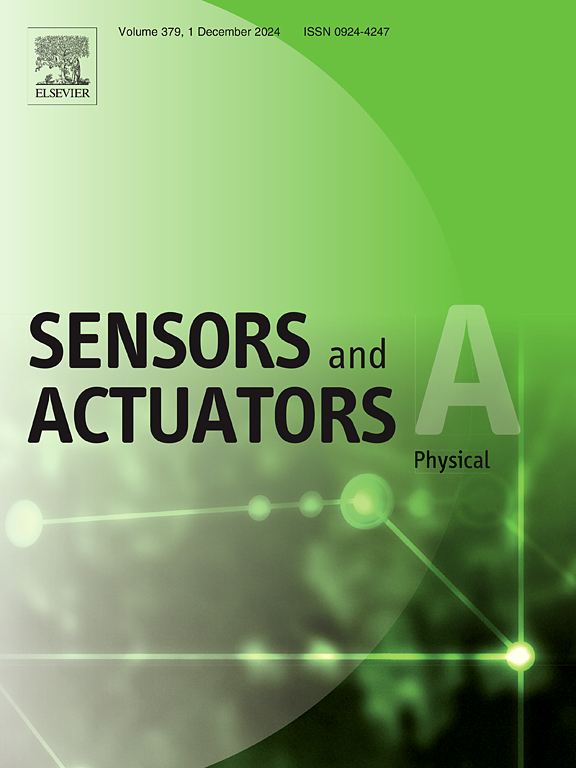Charge capturing effects of boron nitride nanosheets on enhanced triboelectric properties of polyimide nanocomposite films in a conductor-to-dielectric mode
IF 4.1
3区 工程技术
Q2 ENGINEERING, ELECTRICAL & ELECTRONIC
引用次数: 0
Abstract
Dielectric composite materials play a crucial role in the performance of triboelectric nanogenerators (TENGs) by influencing charge storage and transfer capabilities. In this study, we investigate the influence of boron nitride nanosheets (BNNS) on the triboelectric properties of polyimide (PI)-based dielectric nanocomposite films within a TENG setup employing a conductor-to-dielectric configuration and a contact-separation mode. To achieve this, we manufactured PI/BNNS nanocomposite films containing 1–10 wt% BNNS with a thickness of ∼14.67 nm via a solution casting method, followed by thermal imidization. Thermogravimetric characterization revealed that the thermal stability of the nanocomposites improved with increasing BNNS content. Additionally, the triboelectric performance of the PI/BNNS films, used as the negative friction layer, was enhanced due to the electron-trapping capabilities at the BNNS-PI interface. Among the samples, the nanocomposite film containing 5 wt% BNNS exhibited the most significant triboelectric output, generating a voltage of ∼4.0 V and a current of ∼426.4 nA. Moreover, the triboelectric AC output generated by the TENG using PI/BNNS nanocomposite films was successfully rectified into DC signals and subsequently stored in microcapacitors. This capability highlights the significant potential of PI/BNNS nanocomposite films for energy harvesting and storage applications, further supporting their suitability for integration into advanced flexible energy devices.
氮化硼纳米片在导体-介电模式下对增强聚酰亚胺纳米复合薄膜三电性能的电荷捕获效应
电介质复合材料通过影响电荷存储和传输能力,在三电纳米发电机(TENG)的性能中发挥着至关重要的作用。在本研究中,我们研究了氮化硼纳米片(BNNS)对聚酰亚胺(PI)基介电纳米复合薄膜的三电性能的影响,该薄膜在 TENG 设置中采用了导体对介电配置和接触分离模式。为此,我们通过溶液浇铸法制造了含 1-10 wt% BNNS 的 PI/BNNS 纳米复合薄膜,厚度为 14.67 nm。热重分析表明,纳米复合材料的热稳定性随着 BNNS 含量的增加而提高。此外,由于 BNNS-PI 界面的电子捕获能力,用作负摩擦层的 PI/BNNS 薄膜的三电性能得到了提高。在这些样品中,含有 5 wt% BNNS 的纳米复合薄膜的三电输出最为显著,可产生 4.0 V 的电压和 426.4 nA 的电流。此外,使用 PI/BNNS 纳米复合薄膜的 TENG 所产生的三电交流输出被成功地整流为直流信号,并随后存储在微型电容器中。这一功能凸显了 PI/BNNS 纳米复合薄膜在能量收集和存储应用方面的巨大潜力,进一步证明了它们适合集成到先进的柔性能源设备中。
本文章由计算机程序翻译,如有差异,请以英文原文为准。
求助全文
约1分钟内获得全文
求助全文
来源期刊

Sensors and Actuators A-physical
工程技术-工程:电子与电气
CiteScore
8.10
自引率
6.50%
发文量
630
审稿时长
49 days
期刊介绍:
Sensors and Actuators A: Physical brings together multidisciplinary interests in one journal entirely devoted to disseminating information on all aspects of research and development of solid-state devices for transducing physical signals. Sensors and Actuators A: Physical regularly publishes original papers, letters to the Editors and from time to time invited review articles within the following device areas:
• Fundamentals and Physics, such as: classification of effects, physical effects, measurement theory, modelling of sensors, measurement standards, measurement errors, units and constants, time and frequency measurement. Modeling papers should bring new modeling techniques to the field and be supported by experimental results.
• Materials and their Processing, such as: piezoelectric materials, polymers, metal oxides, III-V and II-VI semiconductors, thick and thin films, optical glass fibres, amorphous, polycrystalline and monocrystalline silicon.
• Optoelectronic sensors, such as: photovoltaic diodes, photoconductors, photodiodes, phototransistors, positron-sensitive photodetectors, optoisolators, photodiode arrays, charge-coupled devices, light-emitting diodes, injection lasers and liquid-crystal displays.
• Mechanical sensors, such as: metallic, thin-film and semiconductor strain gauges, diffused silicon pressure sensors, silicon accelerometers, solid-state displacement transducers, piezo junction devices, piezoelectric field-effect transducers (PiFETs), tunnel-diode strain sensors, surface acoustic wave devices, silicon micromechanical switches, solid-state flow meters and electronic flow controllers.
Etc...
 求助内容:
求助内容: 应助结果提醒方式:
应助结果提醒方式:


